
The Oklahoma Century Chest
Then and Now
America has changed dramatically over the last 100 years. Let's look at the world then and now.
Sports
In 1913, sports were starting to become a national obsession in the United States. Most teams only played locally. Unless they attended the games personally, people heard about their favorite teams' victories and losses by word-of-mouth or the newspapers, as there were no televisions or broadcast radio stations. Uniforms were very different and players wore little safety equipment.
Basketball
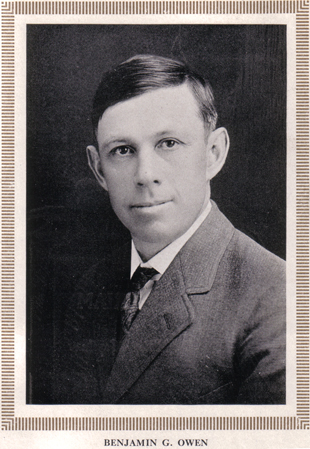
Bennie Owen. In 1913, there was not a National Basketball Association and, of course, no Oklahoma City Thunder. The University of Oklahoma and the Oklahoma A&M basketball teams did not belong to any conferences, but OU went 7-1 and Oklahoma A&M went 3-6 in 1913. Bennie Owen coached the OU basketball, baseball, and football teams between 1905 and 1926 (image courtesy of the Tulsa World).
Baseball

Jim Thorpe. In 1913, Major League Baseball had only sixteen teams in eight states. The Brooklyn Dodgers played in Ebbets Field for the first time. The Philadelphia Athletics beat the New York Giants in the 1913 World Series, four games to one. Jim Thorpe joined the New York Giants as an outfielder and played with them for three years (image courtesy of the Library of Congress).
Football
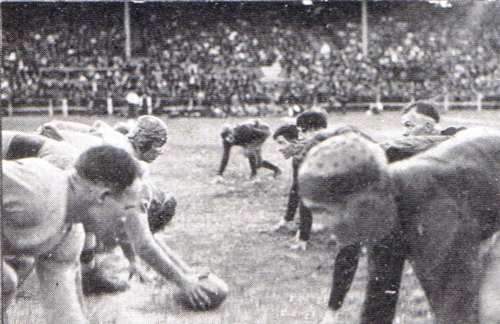
In 1913, there was no National Football League, and it was the first year that the forward pass was used effectively in a game. Notre Dame's Knute Rockne used it to defeat the Army Black Knights. This game increased the popularity of the forward pass, which is now essential to an effective football strategy. The College National Champion of 1913 was the Harvard Crimson. The University of Oklahoma's (OU) team went 6-2, beating Oklahoma A&M 7-0 in the fourth Bedlam game. The Oklahoma A&M Aggies went 4-3. This picture, from the 1915 Texas v. OU game, shows how football players dressed back then, with little padding and optional leather helmets (image from the OU 1916 yearbook The Sooner).
Boxing
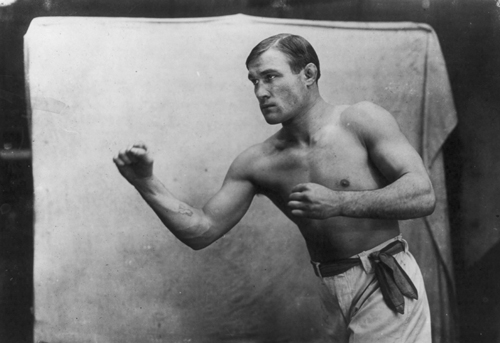
Frank Klaus. In 1913, a German-American boxer named Frank Klaus won the first Middleweight world title granted since 1910. Today, American boxers hold eight of seventeen world boxing titles (image courtesy of the Library of Congress).
Golf

Francis Ouimet became the first amateur to win the US Open in 1913 (image courtesy of the Library of Congress).
Soccer
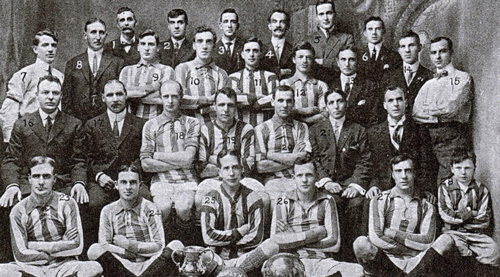
On April 5, 1913, the United States Football (today, soccer) Association formed as the first member organization of FIFA, the Fédération Internationale de Football Association, from North and Central America. Brooklyn Celtic was one of the first FIFA-sanctioned teams in the United States. This is their team from the 1912–1913 season (image courtesy of the International Soccer Archives).
Hockey

The Quebec Bulldogs won the first Stanley Cup in 1912 and the second in 1913. This was prior to the National Hockey League and the Stanley Cup was awarded in a contest between three teams: the Montreal Wanderers, the Montreal Canadians, and the Quebec Bulldogs (image courtesy of the Hockey Hall of Fame).
Racing
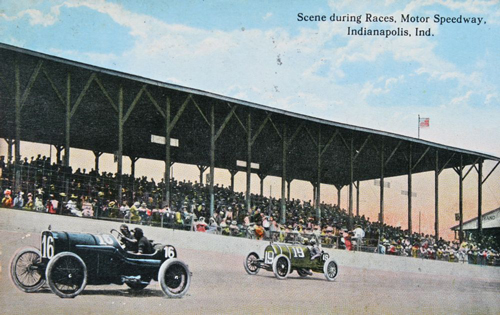
In 1913, the Indy 500 was only three years old. Number 16, a Frenchman named Jules Goux, won the race in a Peugeot L76. There was no NASCAR, and a national NASCAR cup was not awarded until 1949 (image courtesy of The Old Motor).
Tennis

The US Tennis Team won the Davis Cup in 1913 defeating Great Britain three matches to two (image courtesy of the Library of Congress).
Oklahoma City First Annual Road Race

1912 was the year of the First Annual Road Race of the Oklahoma City Motorcycle Club. Participants raced their bikes for four laps around Grand Avenue, which equaled a total distance of 113 miles. This photograph was found in the Century Chest (Century Chest Collection, OHS).
School
More Americans go to school today than in 1913. Back then, only about half of all children in America were enrolled in school, while today almost all children are enrolled. This is partly because of the expansion of access to public school past the 8th grade and the passage of child labor laws. Today, jobs require much more education and technical knowledge. A college education is also more affordable today than it was in 1913. This means that about nine out of ten Americans in 2013 had a high school diploma, and almost three out of ten had a bachelor's degree or higher.
Aside from how few people were getting an education, school in 1913 looked very different from school today. At that time, most children in Oklahoma attended small rural schools, some even in one-room schoolhouses. In the one-room schoolhouse, children of all ages were in the same classroom and the older students helped the teacher in educating the younger students. These schools were small and local, meaning the schools generally had few students from the nearest towns. Starting in 1919, many of the small rural schools consolidated into larger schools that served a larger number of students.
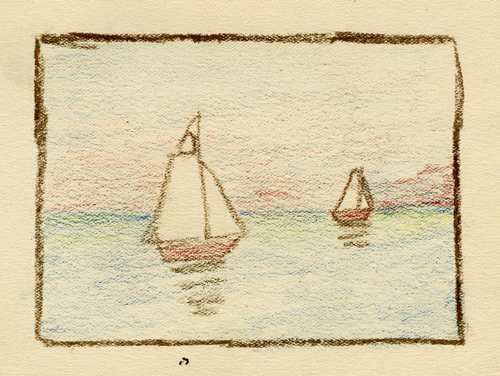
Schools in 1913 focused on classical education in subjects like art as well as the basics. This drawing by Joanna Schaefer was found in the Century Chest (Oklahoma Century Chest Collection, OHS).
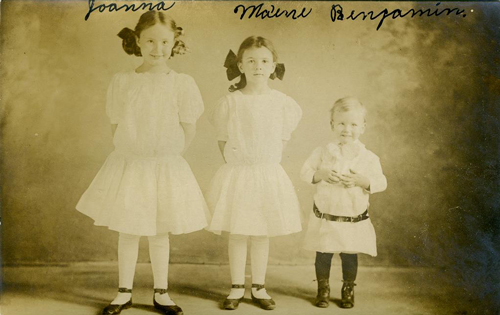
Joanna and Marlene Schaefer, ages eight and seven, were elementary students in 1913. This picture was found in the Century Chest (Oklahoma Century Chest Collection, OHS).
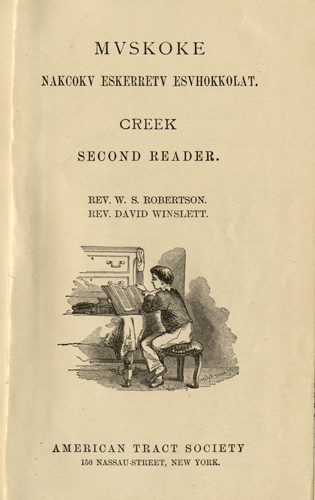
Most basic education focused on reading, writing, and arithmetic, using books like this reader from the Creek Nation Schools to aid in instruction. This book was found in the Century Chest (Oklahoma Century Chest Collection, OHS).
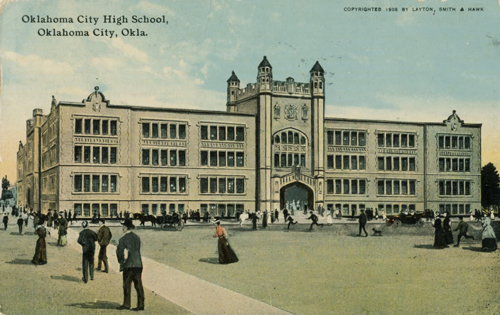
Built in 1910, Central High School was Oklahoma City's first high school. Not many people attended high school 100 years ago and only 12.8 percent of Americans had graduated with a diploma in 1913. Most children began working sometime during middle school and many never finished school (OHS Collections).
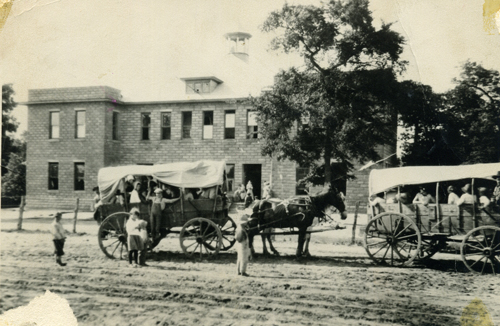
Schools were not allowed to use motorized transportation to pick up students in Oklahoma until a bill was passed in 1919. These children are arriving at school in Fillmore, Oklahoma, in 1918 (OHS Collections).
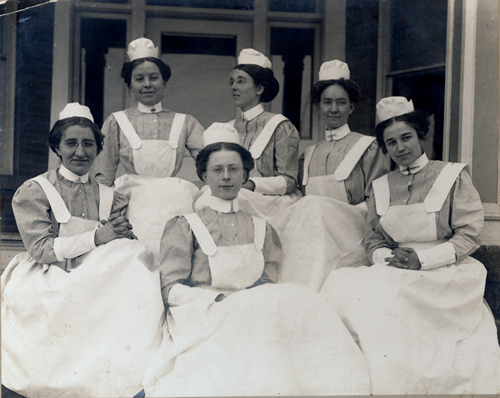
The University of Oklahoma experienced some firsts in 1913 as well. These women were the first nurses to work at the University's medical school and hospital. Universities were very expensive and only 2.3 percent of US citizens had a bachelor's degree or higher (OHS Collections).
Transportation
With the advent of the automobile, transportation was beginning to change in America by 1913. Cars were still rare. Henry Ford did not perfect mass production until the end of 1913, so cars were still too expensive for most families. The United States of 1913 had about eight horses or mules for every person that lives in Oklahoma today. In fact, there were so many horses in America that most cities had employees whose only job was the collection and disposal of horse manure. Most individuals traveled by public transportation, such as trolley cars and trains, or they walked as most major cities spread no further from downtown than two miles in any direction. Most goods were transported across the country by rail and then delivered to their destination by horse and wagon.
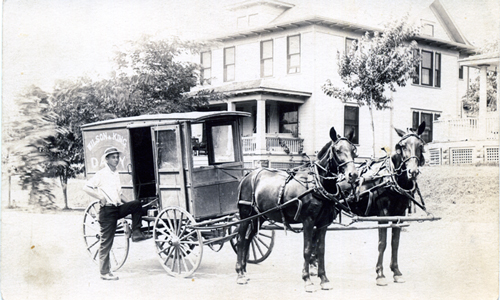
Freight trucks were not affordable or popular until the 1920s. In fact, most people moved goods over short distances by horse and wagon in 1913. That is why freight truck drivers are still called "teamsters," even though they no longer drive teams of horses. This man is delivering milk to Tulsa residents (OHS Collections).
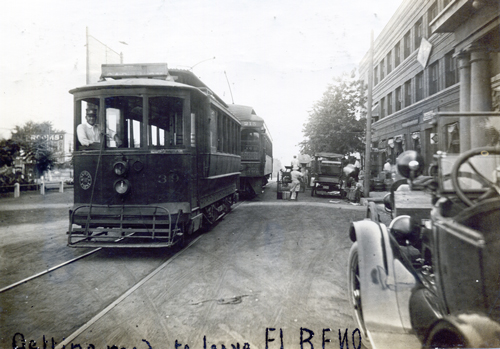
In 1913, cars were still too expensive for most people to own. If someone had to travel further than they could walk in a day, they usually used the Oklahoma City Interurban Rail. These trolleys connected Oklahoma City to surrounding cities like Yukon, Edmond, or Norman. This trolley is getting ready to leave El Reno for Oklahoma City (OHS Collections).
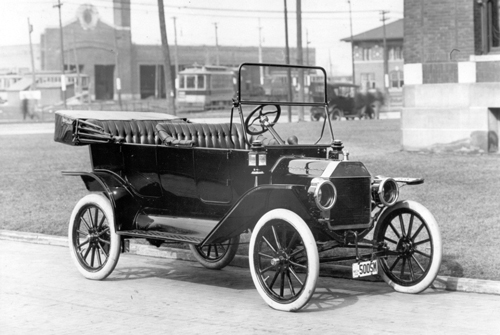
The Ford Model T was the most popular car in America in 1913. The Model T was reliable and cheap, and 180,000 were sold in 1913. In 1915, the cost of a Model T dropped from $550 to $440, which meant a Ford factory worker could buy a Model T using four-months pay. By 1920, the Model T cost only $260, and by 1927 Ford sold 15 million Model Ts, making it the most popular car model in world history (image courtesy of the Henry Ford Museum).
Communication and Entertainment
An important part of history over the last 100 years has been the invention and use of new and innovative ways to communicate. The ways that Americans communicate with one another have changed greatly since 1913. Cameras, phones, radios, music players, and even letters have all seen advances in technology since 1913.
Cameras
One thing which has not changed in 100 years is how popular photography is in America. By 1913, photography was very similar to photography today, and most Americans had access to a camera. The Kodak Company sold two of the most popular cameras in America, the Folding or Vest Pocket Camera and the Brownie Camera. The Brownie camera was an inexpensive camera with a body made of cardboard. The Brownie No. 1 cost only $1.00 in 1913, so even a child could afford to buy one.
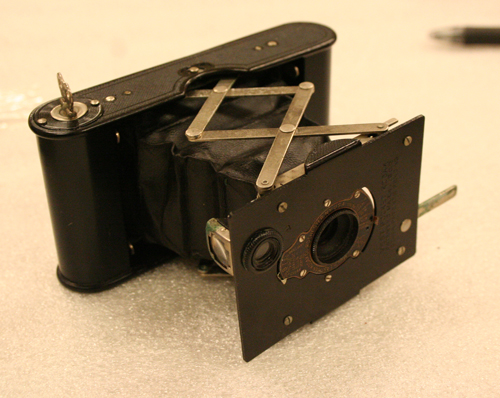
The Kodak Vest Pocket Camera was convenient and allowed you to take photos quickly almost anywhere. This camera was placed in the Century Chest and removed in 2013. It is about the size of a large modern cellular phone. The Vest Pocket Camera was smaller than the Folding Pocket Camera and sold for $6 (Oklahoma Century Chest Collection, OHS).
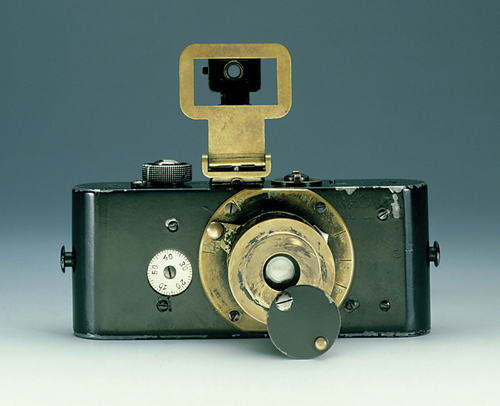
Oscar Barnack invented the Ur-Leica, the world's first 35mm camera, in 1913. When World War I began Barnack's work on 35mm cameras was postponed until after the war, so the Leica was not in production until the 1920s. Eventually 35mm film became the gold standard in photography and still affects camera design today (image courtesy of the Madison Media Institute).
Telephones
In 1913 the telephone was just starting to become the popular way for people to communicate. Using the telephone included strict rules of etiquette that dictated when it was allowable to interrupt another person's call, and what procedure you had to use to make and end a call. All phone calls went through an operator and calling across the country meant connecting through several operators.
There are many homes today which also do not have a landline phone, like in 1913, but that is because many people today only use cellular phones. While the telephone of 1913 was more of a luxury than a necessity, there are now more cellular phones in the United States than there are people. People can make direct phone calls on private lines to locations all around the world without going through operators. The technology used to route phone calls to the right phone is automated and no longer relies on switchboard operators.

This is the Pioneer Telephone and Telegraph Company building in Oklahoma City, ca. 1907. Eventually, Pioneer and three other companies in Oklahoma joined together to become Southwestern Bell. The Pioneer Building, as it's still called, is still on the corner of NW 3rd and Broadway in downtown Oklahoma City (OHS Collections).

This panoramic photograph of downtown Oklahoma City was found in the Century Chest. The photograph was taken from the roof of the Pioneer Telegraph and Telephone company building, looking South at the intersection of 3rd and Broadway, in 1913 (P2013.133.262, Oklahoma Century Chest Collection, OHS).
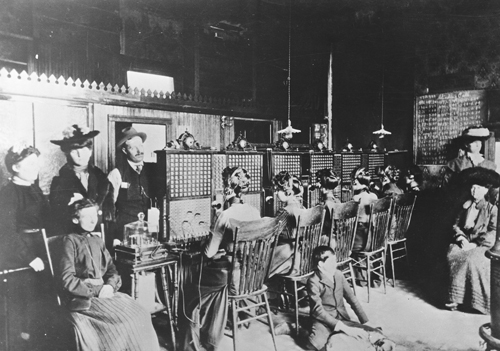
In 1913, phones did not connect calls automatically. You had to call the switchboard operator, who would then connect you to the person you wanted to call. If you were calling long distance, like from Oklahoma City to Tulsa, the operator would have to connect you to the Tulsa operator who then connected your call. Switchboard operators were generally women, and states had many different switchboards. By 1913, Oklahoma had more than 800 different switchboard exchanges (21412.BH.57, Z. P. Meyers/Barney Hillerman Photographic Collection, OHS).
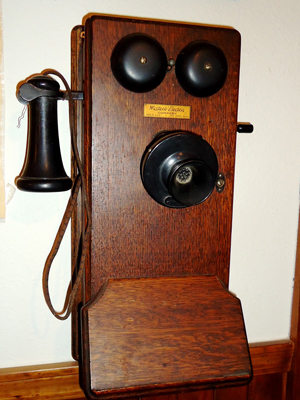
This is a wall-mounted phone, similar to the desk phone. This type of phone was an older model and more affordable. Many people in 1913 still couldn't afford a phone, and when they got a phone many people used a party line to save money. A party line is a phone line shared by you and your neighbors. This means that when your neighbors are on the phone, you can't make a call (image courtesy of the Pioneer Heritage Townsite Center).
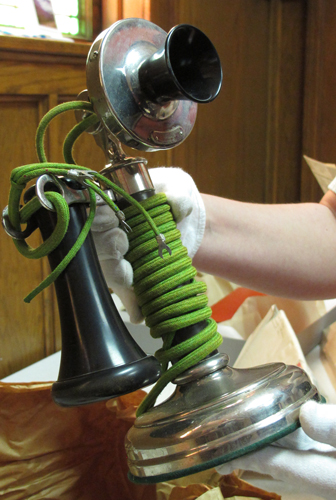
This telephone, which was in the Century Chest, is a desk phone from 1913. It has no dialer, so you clicked the receiver hook a set number of times to notify the operator that you wished to make a phone call. When you were done, you clicked the same hook in a similar pattern and then hung up (Oklahoma Century Chest Collection, OHS).
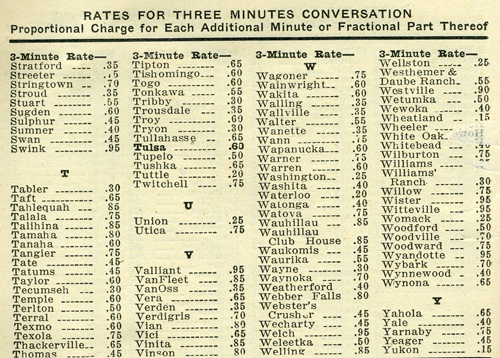
This is part of the 1913 Oklahoma City phone book found in the Century Chest. It lists the cost to make a long distance phone call to various cities from a home in Oklahoma City. For example, a three minute phone call to Tulsa cost $0.60. At this time the average wage for an unskilled worker in America was around $0.15/hour, so a person would have to work four hours to pay for a three-minute call to Tulsa in 1913 (B2013.133.004, Oklahoma Century Chest Collection, OHS).
Letters
In 1913, it was common for people to write letters back and forth with family, friends, and acquaintances. In fact, due to the unreliability and expense of phone calls, most people made all of their long distance communications by letter. For example, a three-minute phone call from Oklahoma City to Tulsa cost $0.60 while a letter cost $0.02, and when the average worker earned $0.15 an hour, a letter was a much better option. People wrote letters about daily activities, special events, sometimes even what the weather was like the last week.
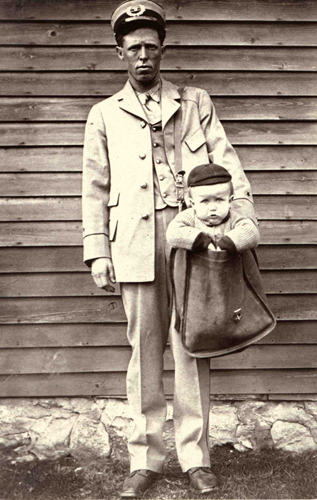
1913 was the first year the Post Office offered "parcel post," or the shipping of packages. It cost $0.15 for parcels under fifty pounds. For a few people, this led to some ingenious ways for children to visit family. Between 1913 and 1915, seven children were mailed to relatives; one girl was mailed from Pensacola, Florida, to Christainburg, Virginia. The Inspector General began an investigation in 1915 and that was the end of "child-mailing." Many people found the idea humorous and took pictures like this one with their child and local mail carrier (image courtesy of the Smithsonian Institution).
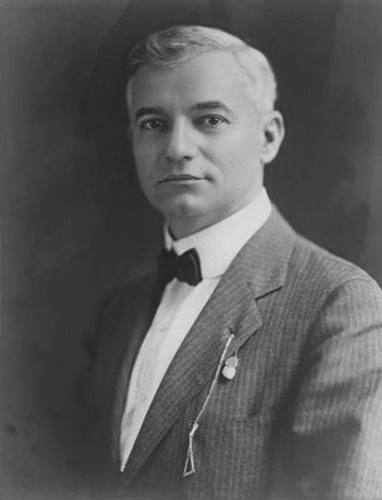
Frank P. Johnson was a banker in Oklahoma City in 1913. His contribution to the Century Chest was a letter drafted to the current president of the American National Bank. In the letter he predicts the end of traditional mail: "correspondence will be conducted instantaneously by electrical means."

This is an excerpt from Johnson's letter, taken from the Century Chest, where he predicts the rise of electronic mail. (M2013.133.035, Oklahoma Century Chest Collection, OHS)
Music
While musical styles have changed in 100 years, people loved music no less in 1913 than they do today. The most popular song of 1913 was "When Irish Eyes Are Smiling," as recorded by Chauncey Olcott. The biggest difference is that records and live performances were the only means of listening to music in 1913. Today, people listen to music on radios, computers, phones, tablets, personal mp3 players, and CD players. Some people still listen to music on records, cassette tapes, and even 8-track tapes, but this is rare.
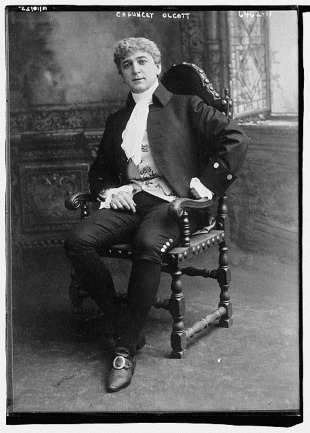
Chauncey Olcott, the most popular recording artist of 1913 (image courtesy of the Library of Congress).

This is an Edison Record Player found in the Oklahoma Century Chest. The first records made were on hollow, wax cylinders. The record needle rides the ridges on the cylinder and, as it goes up and down, bumps against a thin fabric. The frequency of the bumps creates different sounds and makes music. Your ear works this same way except with tiny bones and membranes rather than needles and fabric. Also, modern speakers today work in much the same way except with magnets and fabric rather than needles (Oklahoma Century Chest Collection, OHS).
Listen to Chauncey Olcott's "When Irish Eyes are Smiling"
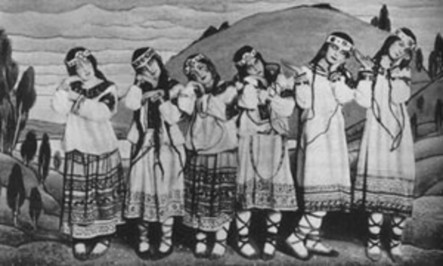
The 'knock-kneed' Lolitas of the original The Rite of Spring (image courtesy of the The Guardian).
For many people in 1913, buying music records was expensive but attending live performances was cheap. Many workers around the world enjoyed operas and concerts for entertainment. In 1913, Igor Stravinsky premiered a new ballet, The Rite of Spring. This ballet is considered one of the first pieces of modern music, and was so different that it caused a riot to break out at its first performance. Today, The Rite of Spring is one of the most influential musical compositions from the twentieth century.
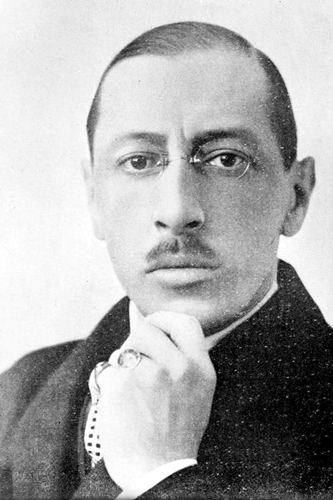
Igor Stravinsky, c. 1910 (image courtesy of the Library of Congress).
Clothing
Clothing has changed a lot in the last 100 years. For example, the belt was not common in 1913 so most pants had no belt loops, and men used bracers or suspenders to hold up their pants. Clothes were just beginning to be sold "ready-to-wear," which meant you could buy a dress or jacket and wear it out of the store with little or no tailoring. The best clothes were still handmade. Most people owned few sets of clothes, maybe only two to three sets of pants, vests, and jackets, but had many plain shirts to change throughout hot days. This is part of the reason many old homes built in the 1910s have very little closet space.
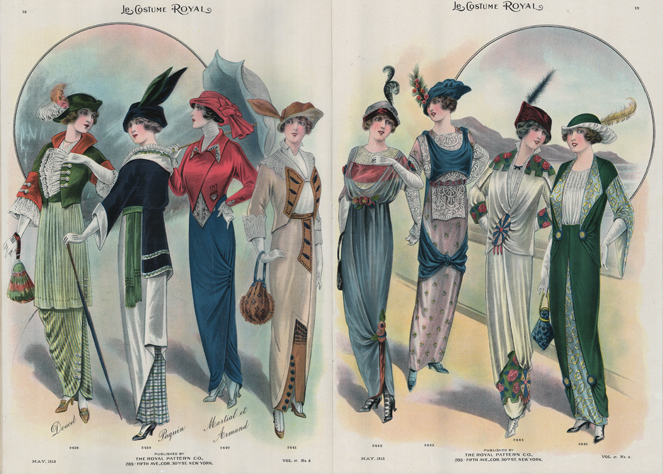
Le Costume Royale was a fashion magazine printed in New York City. It showed the latest fashions that a movie star or socialite might wear. Unlike fashion magazines today, though, this magazine was full of patterns for seamstresses and dressmakers to use and not just pictures of the finished product. These dresses still follow the cultural norms of the day; long skirts and a hat were required, as well as long sleeves. This image is from a copy of the magazine found in the Century Chest (M2013.133.213, Oklahoma Century Chest Collection, OHS).
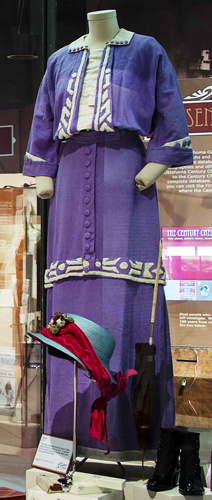
This outfit, found in the Century Chest, is an example of popular Spring fashion from 1913 (Oklahoma Century Chest Collection, OHS).
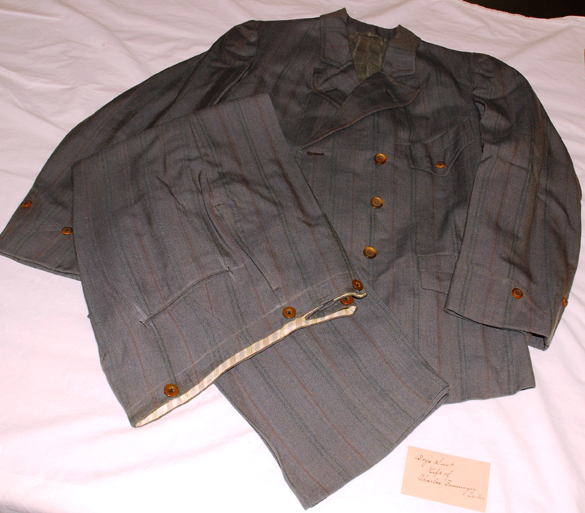
This boy's suit from 1913 was found in the Century Chest. Notice how the trousers have no belt loops; they have buttons for bracers instead (Oklahoma Century Chest Collection, OHS).
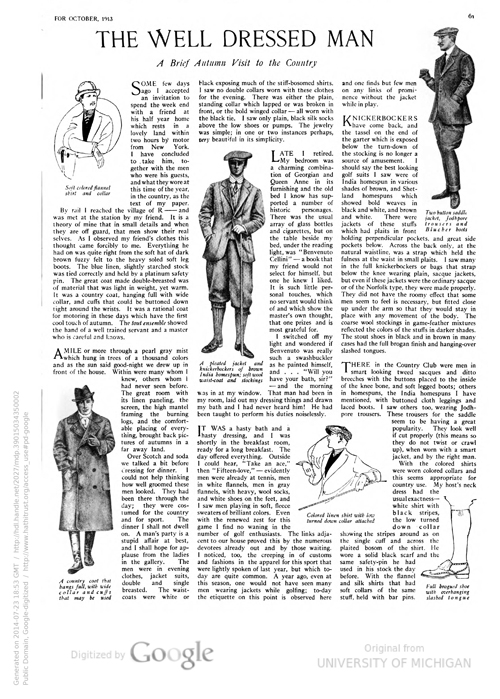
Men's clothing in 1913 required a nice shirt, tie, vest, and hat. A man could wear trousers or knickers (short pants tucked into socks). Even school-aged boys dressed in similar styles, though work clothes would also be appropriate in rural areas. Men were required to wear long pants and long-sleeved shirts all year long. No person went outdoors without a hat as well (image courtesy of Hathi Trust Digital Library).

